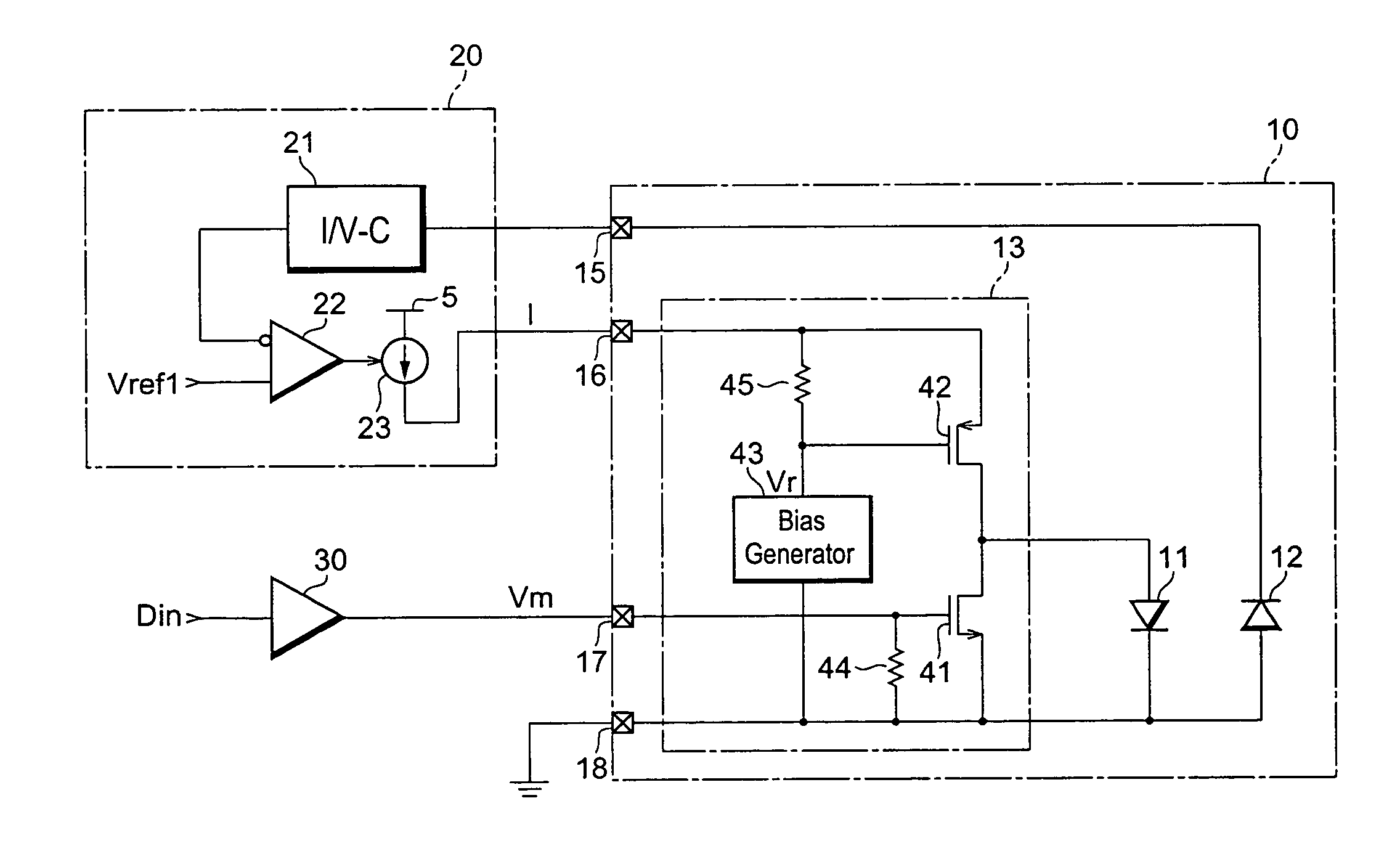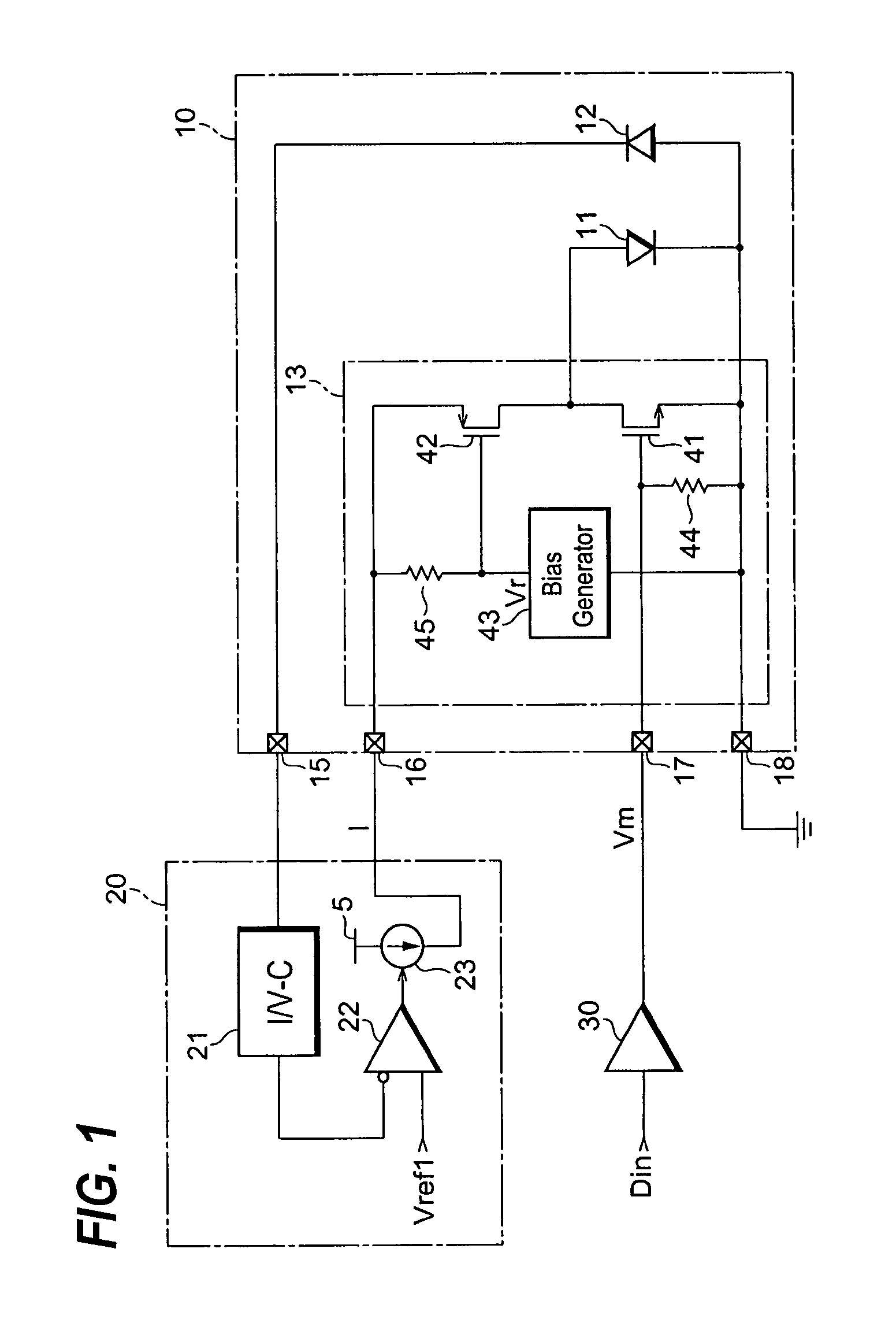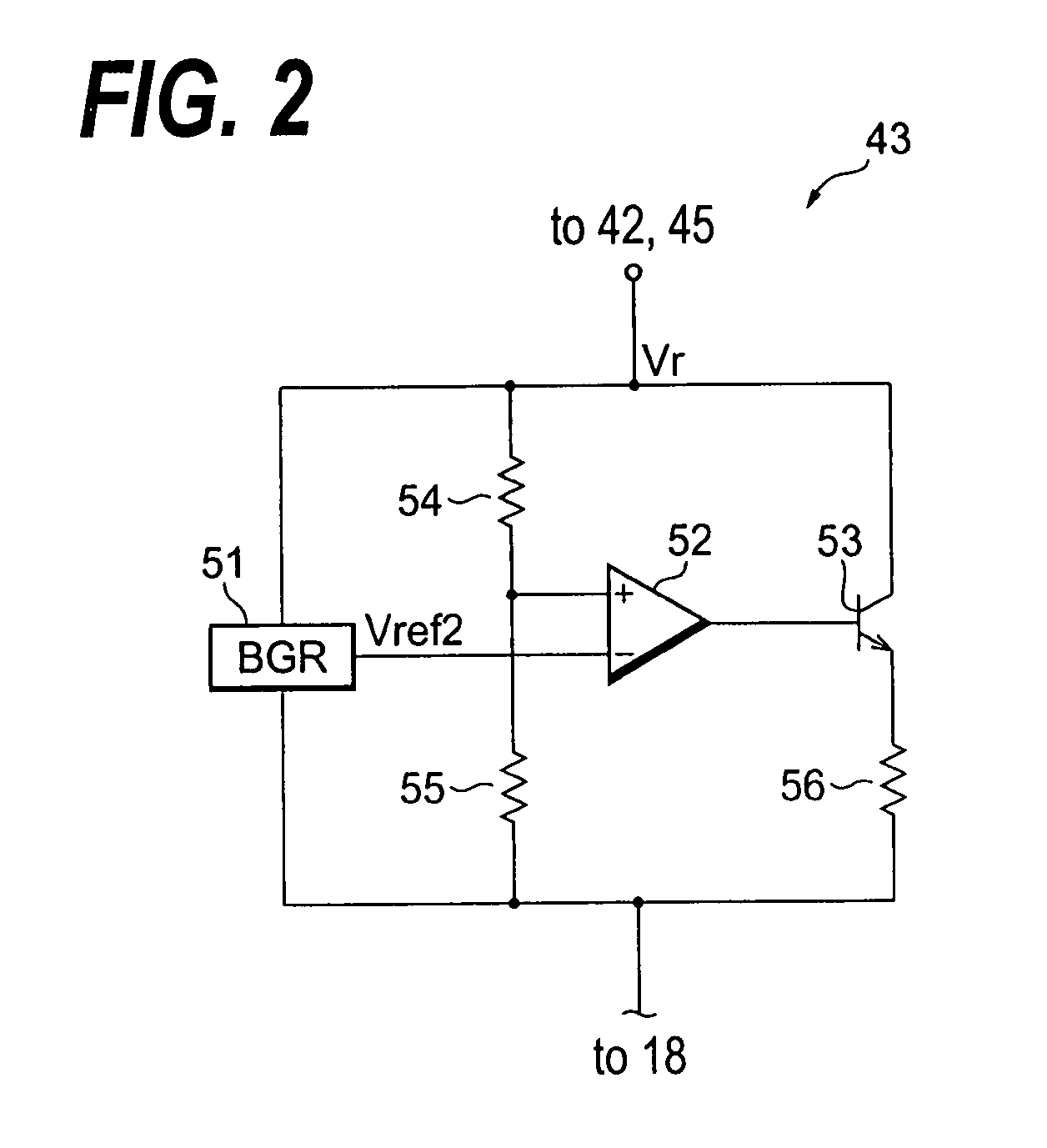Optical transmitter with a shunt driving configuration and a load transistor operated in common gate mode
a technology of optical transmitter and load transistor, which is applied in the direction of semiconductor lasers, electrical equipment, laser details, etc., can solve the problems of substantially short circuit of gate bias and abnormal power supply, and achieve the effect of suppressing driving signal infection, small input, and large output impedan
- Summary
- Abstract
- Description
- Claims
- Application Information
AI Technical Summary
Benefits of technology
Problems solved by technology
Method used
Image
Examples
first embodiment
[0015]FIG. 1 is a circuit diagram of an optical transmitter 10 according to the first embodiment of the present invention. FIG. 1 illustrates, in addition to the optical transmitter 10, an auto-power control (hereafter denoted as APC) block 20 and a signal driver 30. The optical transmitter 10 includes a semiconductor laser diode (hereafter denoted as LD) 11, a photodiode (hereafter denoted as PD) 12, and a driver 13. The optical transmitter further provides a monitoring terminal 15, a power supply terminal 16, a signal terminal 17 and a ground terminal 18.
[0016]The LD 11 is connected to a current source 23 within the APC block 20 through the power supply terminal 16 to be provided with a driving current from the current source 23. The LD 12, by providing the driving current, is able to emit light. The PD 12 monitors the optical power emitted from the LD 11. The PD 12 generates a photocurrent substantially proportional to the optical power emitted from the LD 11. The optical transmi...
second embodiment
[0031]FIG. 3 is a block diagram of an optical transmitter 10A according to the second embodiment of the present invention. This transmitter 10A includes, in addition to elements shown in FIG. 1, an inductor 46 inserted between the drain of the second transistor 42 and the drain of the first transistor 41.
[0032]The second transistor 42 inherently provides the parasitic capacitance between the drain and the source thereof, which degrades the isolation between the drain and the source for high frequency components of the driving signal Vm. The impedance of the inductor 46 between the drains of the transistor, 41 and 42, increases as the frequency becomes high, which compensates the degradation in the isolation by the transistor 42 at quite high frequencies. In addition, the inductor 46 may isolate the first transistor 41 from the parasitic capacitance between the drain and the source of the second transistor. Thus, the embodiment shown in FIG. 3 may suppress the high frequency componen...
third embodiment
[0033]The power detector 47, which is connected to the power supply terminal 16 and the source of the transistor 42, is configured to detect the level V1 at the power supply terminal 16, to compare the level V1 with a reference VTh1, and to control the switch 46 in accordance with the comparison. The detector 47 turns off the switch 46 when the level V1 becomes greater than VTh1, while, it turns on in other cases between the level V1 and the reference Vref2. Thus, the bias of the transistor 42, namely, the voltage difference between the source and the gate of the transistor 42 occasionally becomes substantially zero.
[0034]The bias generator 43 in the output Vr thereof is provided to the gate of the transistor 42 through the switch 46. When the switch 46 is turns on, the gate of the transistor 42 may be stabilized in the level Vr, which is the same condition with the case in the first and the second embodiments.
[0035]When the level V1 at the power supply terminal 16 becomes large due...
PUM
 Login to View More
Login to View More Abstract
Description
Claims
Application Information
 Login to View More
Login to View More - R&D
- Intellectual Property
- Life Sciences
- Materials
- Tech Scout
- Unparalleled Data Quality
- Higher Quality Content
- 60% Fewer Hallucinations
Browse by: Latest US Patents, China's latest patents, Technical Efficacy Thesaurus, Application Domain, Technology Topic, Popular Technical Reports.
© 2025 PatSnap. All rights reserved.Legal|Privacy policy|Modern Slavery Act Transparency Statement|Sitemap|About US| Contact US: help@patsnap.com



